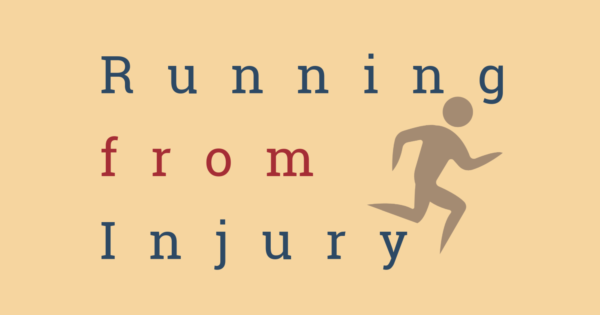Active rest. Yes, this is an oxymoron. This is also a concept that I try tirelessly to explain to patients, as well as friends and family members who come to me asking for advice on how to deal with an injury. Many running injuries are overuse injuries. I have seen many patients who take weeks to months off from any type of exercise in the hopes of healing their running related injury. While well intentioned, taking that much time off from any activity in the hopes that your running injury will get better can be counter productive.
Running injuries are common, 85% of runners will experience a running injury at some point in their lives. The other 15% are probably in denial about their injury, or not running enough.

Most running injuries are due to training errors. Training errors can be things like increasing mileage to quickly, trying to increase pace too quickly, wearing the wrong kind of shoes, or not getting enough rest. While I am a firm beliver that as humans we are meant to run, I also understand the toll that running can take it’s toll on the body. Trust me. I have treated numerous running injuries. I’ve dealt with running injuries myself. I’ve dealt with burnout from running.

Cross training is another work for active rest. I think of cross training as something that I do other than running to mix up my routine, and prevent overuse injuries. I may cross train 1-2 days a week. Active rest is something that you do when you are experiencing pain with running and need to take a break from running. The objective is to take a break from running, but to remain active as not to lose strength and fitness. The best activities for active rest are one’s that are enjoyable, and do not cause the same type of pain that your injury is causing. Some examples of active rest are activities such as swimming, biking, spinning, walking and Pilates.
As a physical therapist, one could also say that I am a pain specialist. The more that we study pain, the more we realize that pain is a construct of our nervous system. That is, our nervous system (with the brain in charge) is responsible for what types of stimuli are painful, and how painful the stimulus is. When we are in a pain state, the nervous system is on high alert making small and seemingly harmless movements painful. Our nervous system can become overly sensitive to our injury. By finding ways to move that are not painful (such as though active rest), we can desensitize the nervous system, or wind the nervous system down so that those small harmless movements involving the injured body part are not so painful.

In my clinical work, I will advise patients to perform the active rest activity of their choice along with any other exercises I prescribe. As stated before, the active rest helps to maintain fitness and mobility. The prescribed PT exercises help to facilitate an improvement in areas (such as core strength, gluteal strength, ankle mobility, etc) that may have caused the injury in the first place.
With some injuries, and especially illnesses, it may be best to take time off from working out. However, for many overuse running injuries, taking weeks off at a time might not be best. While taking 3 weeks off of running and sitting on the couch may help your knee pain to go away, I can almost guarantee that you will have difficulty getting back into running. You will be frustrated over your lack of fitness, and that knee, or another body part will start to bother you again.

Please do not utilize active rest if your alternative activity of choice is painful. In some cases, active rest is best used after taking 1-2 days off from all exercise after you get the initial pain from an injury. If your pain lasts over a week, you have severe pain that does not go away with 1-2days off from all exercise, or you have severe swelling associated with your pain, then you need to consult with a healthcare professional.
I also advise that if you do have an injury that does not seem severe, but does not resolve with 1-2 weeks of active rest, then you should also consult with a healthcare provider.

Active rest is an opportunity to let your injured body part rest, and your nervous system to calm down while maintaining fitness and mobility. While an active rest period can be crucial to coming back from injury, there are certain situations where active rest should be bypassed and you should head straight for a healthcare professional to receive care for your injury.
